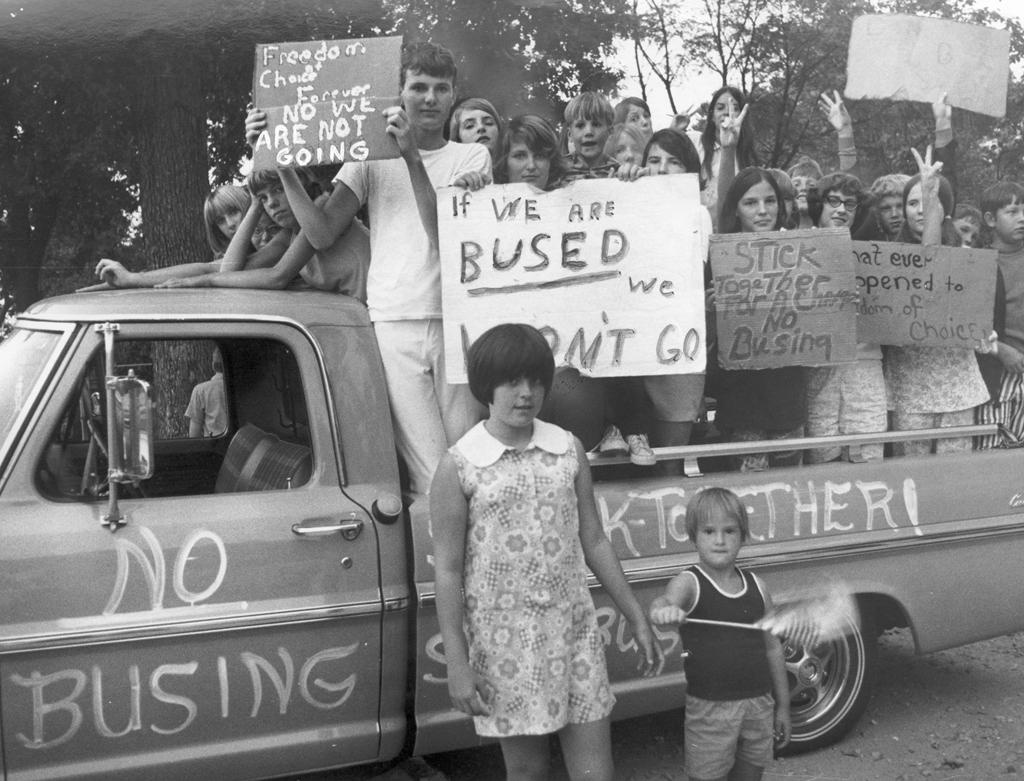By Dixie Anon for Identity Dixie
Dixie has gone through three distinct periods of Reconstruction. The first and most famous began in 1865 with Appomattox and ended in 1877. The second began in 1965 with the passage of the Voting Rights Act and ended in 1972. The third began in 2015 with the Charleston shooting and is going on to this day. The story of how the First Reconstruction ended is well known and how (or even if) the Third Reconstruction ever ends remains to be seen. The story of how the Second Reconstruction ended is a story that has not been fully explored. And, the central figure in it is also the central figure in the struggle to maintain home rule from 1954-1965, Governor George Wallace.
In the disastrous Swann v. Charlotte-Mecklenburg Board of Education, the Supreme Court held that not enough was being done to end segregation, mostly due to “white flight” from the major cities into the suburbs in the years following Brown vs. the Board of Education. The Court thus allowed for the government to take some kids from white neighborhoods and put them in majority black schools and take students from black neighborhoods and put them in white schools. This was done in order to more quickly attain the goals of the integrationists. It that white parents had to be able to afford to send their kids to private schools, which were at the time either de facto or de jure all-white, in order to maintain some semblance of the old order. Simply moving to a white neighborhood was not enough.

It was a deeply, deeply unpopular ruling. And, not just with white people but also with black people. The hatred of forced busing was widespread in the North, as well as in Dixie. It wasn’t just a matter of those mean racists not wanting their daughter to date a black guy either, but because they correctly saw it as destroying organic communities, putting more strain on an already overworked school system, and ending any sense of neighborhood pride. There were protests, but there was one problem – no national political figure was willing to embrace the anti-busing cause. Liberals, both Democrats and Republicans, thought the ruling was great, but even conservative Republicans were unwilling to but any weight behind it, fearing they would be called racists. All that changed when Alabama’s George Wallace embraced the issue and began to make a serious run for the presidency.
Running as a Democrat in the 1972 primaries, Wallace capitalized as the one person willing to take on the various negative consequences of busing, winning states, not only in his native Dixie, but also in the North. His victories in Florida and Tennessee were particularly impressive. In Florida, he won every county in the state but one. In Tennessee, he won every county. Seeing Wallace’s popularity, Richard Nixon stole the busing issue from him, promising to end it if he was elected president. Ultimately, a would-be assassin’s bullet stopped Wallace, so the world will never know what would have happened in a presidential race between George Wallace and Richard Nixon – between the man who took on busing when no one else would, and the man who embraced the issue only when he saw that he could.
For Wallace’s base, he was the perfect candidate. As Samuel T. Francis would point out two decades later, blue-collar white workers are essentially caught between the two parties and will vote for the one they see as less hostile to their interests. Though they hate the Democrats for destroying the role of religion in public life and forcing multiculturalism on them, they also hate the Republicans for outsourcing. They fear both parties for forcing mass immigration on them. Wallace was a man that promised to fight all of it, he was a man willing to smash orthodoxies he saw as harmful to those he represented. It is fitting that he, more than anyone, helped end the Second Reconstruction. Though busing never really ended, after Nixon used it to damage McGovern in 1972, no politician was willing to touch it. As such, it was never as enforced as it looked like it would be in 1971.
Almost entirely thanks to Wallace’s efforts, busing went from something almost every mainstream politician was afraid to oppose to being one almost every mainstream politician was afraid to support. When Joe Biden’s more liberal rivals criticize him for opposing busing back in the day, they are unaware of how unpopular busing actually was. Remember how I said Nixon hit George McGovern hard on that issue? McGovern lost 49 states that year. McGovern lost Cook County, Illinois that year – that’s Chicago. Biden and almost everyone else wouldn’t touch that issue with a 10-foot poll because of that. Wallace was the first to show any courage opposing it.
Had it not been for Wallace, the Second Reconstruction would have kept on going and grown more radical. Without Wallace, Dixie in 1980 could have looked a lot like Dixie in 2020. I don’t want to even imagine what Dixie in 2020 would have looked like in this timeline. For those of us who grew up in the 1970s, 1980s, 1990s, and even the 2000s, we were surrounded by the sights and sounds of Confederate glory – a world where the flag still flew proudly and describing oneself as “Unreconstructed” was a term of pride.
We must thank George Wallace.

